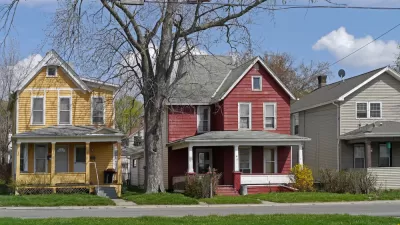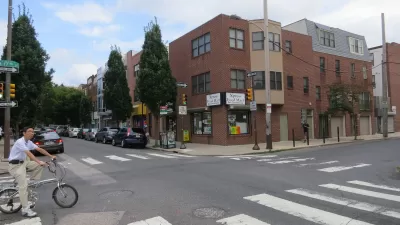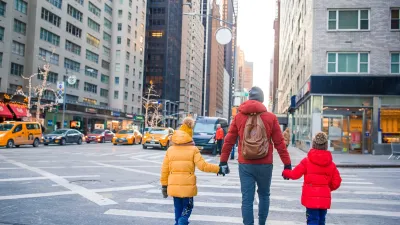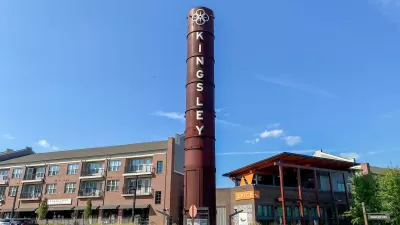Places like Columbia Heights, an older suburb north of Minneapolis, lie at the focal point of conflict over development and gentrification. Can these places support a 21st-century urbanism?

Adjoining a rapidly-gentrifying arts district, Columbia Heights is known for its deep working-class roots and a heavy helping of automotive businesses. Alan Ehrenhalt discusses the tensions that are rising as demographic shifts have city leaders looking toward a hipper, more prosperous future.
Inner-ring suburbs like Columbia Heights "are blue-collar towns, developed after World War II to attract industrial workers lifting themselves into the middle class [...] these first-tier suburbs now are home to aging populations, aging housing stock and aging infrastructure [...] Lurking beneath the debate, as you might expect, is the issue of gentrification."
While some inner suburbs are cashing in on their inherent walkability (i.e., streetcar suburbs), others don't lend themselves so easily to the coffee shop set. "Sprinkled with drive-up businesses and constant curb cuts, Central Avenue [in Columbia Heights] is virtually unwalkable. Pedestrians who wish to stroll down the busiest mile-long strip have to cross the wide street over and over again to find sidewalk space."
FULL STORY: The Saga of an Inner Suburb's Struggle for an Identity

Alabama: Trump Terminates Settlements for Black Communities Harmed By Raw Sewage
Trump deemed the landmark civil rights agreement “illegal DEI and environmental justice policy.”

Planetizen Federal Action Tracker
A weekly monitor of how Trump’s orders and actions are impacting planners and planning in America.

The 120 Year Old Tiny Home Villages That Sheltered San Francisco’s Earthquake Refugees
More than a century ago, San Francisco mobilized to house thousands of residents displaced by the 1906 earthquake. Could their strategy offer a model for the present?

LA’s Tree Emergency Goes Beyond Vandalism
After a vandal destroyed dozens of downtown LA trees, Mayor Karen Bass vowed to replace them. Days later, she slashed the city’s tree budget.

Sacramento Leads Nation With Bus-Mounted Bike Lane Enforcement Cameras
The city is the first to use its bus-mounted traffic enforcement system to cite drivers who park or drive in bike lanes.

Seattle Voters Approve Social Housing Referendum
Voters approved a corporate tax to fund the city’s housing authority despite an opposition campaign funded by Amazon and Microsoft.
Urban Design for Planners 1: Software Tools
This six-course series explores essential urban design concepts using open source software and equips planners with the tools they need to participate fully in the urban design process.
Planning for Universal Design
Learn the tools for implementing Universal Design in planning regulations.
Ada County Highway District
Clanton & Associates, Inc.
Jessamine County Fiscal Court
Institute for Housing and Urban Development Studies (IHS)
City of Grandview
Harvard GSD Executive Education
Toledo-Lucas County Plan Commissions
Salt Lake City
NYU Wagner Graduate School of Public Service





























